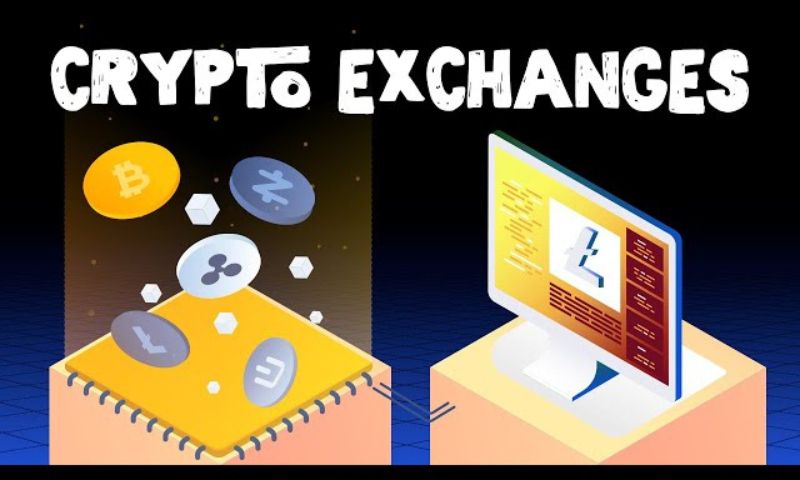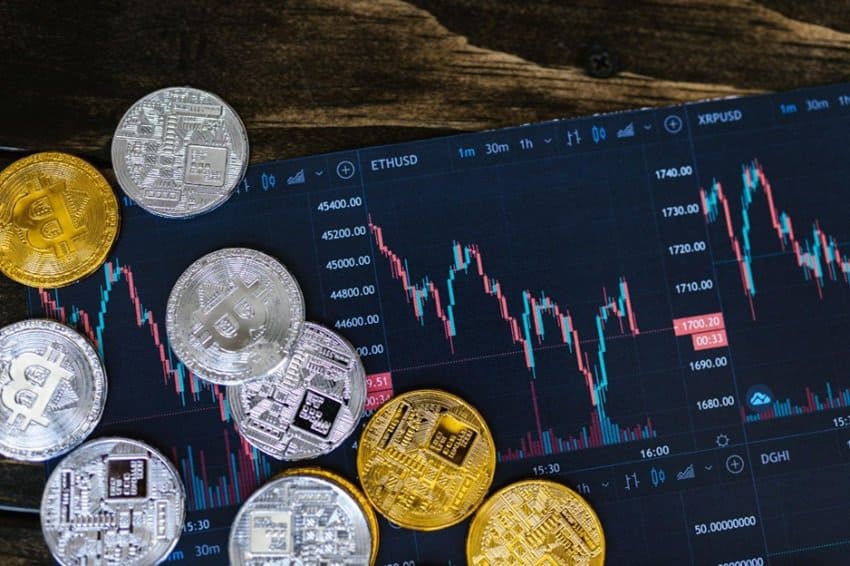Comparing margin trading fees on different crypto exchanges can make or break your trading success. Each platform has its own fee structure ticking away at your profits. I’ve crunched the numbers and combed through the fine print to save you time and coins. Ever wonder why your buddy pays less to play the market? It’s all about where they trade. Get the inside scoop on who’s dipping too deep into your digital wallet, so you can trade with confidence and keep more of your money where it belongs – in your crypto stash.
Understanding Margin Trading Fee Structures
The Basics of Leverage Fee Structures
Margin trading lets you trade more money than you own. It’s like a loan for trading. You put down a part, called “margin,” to open a bigger trade. But when you trade with leverage, you must pay fees. It’s crucial to understand these fees to trade wisely and save money.
Evaluating Margin Borrowing Costs Across Exchanges
Each exchange sets its own margin fees. This means the cost of borrowing can change a lot between them. It’s smart to compare these costs before you start trading. Look for things like interest rates, how often they charge you, and any other fees they might add on.
For example, let’s say Exchange A charges 0.01% interest every hour on the money you borrow, while Exchange B charges 0.03% but only once a day. Exchange A might seem cheaper at first. However, that small fee adds up all day and night. So, by the time a full day passes, you might pay more there than at Exchange B.
Interest rates aren’t the only costs to consider. Some exchanges also charge a fixed fee every time you open or close a trade. These fees can eat into your profits if you’re not careful. Also, some exchanges might have lower fees, but their interest rates might be higher. This makes it tricky to find out which one is truly the best deal.
Now, what if you’re a day trader? You’ll care more about intraday margin costs. These are the fees for trades you open and close on the same day. They’re often lower than the fees for keeping a trade open overnight. Day traders can save by using exchanges with low intraday fees.
But what happens if the market moves against you? You need to know about margin calls. This is when the exchange asks you for more money to keep your trade open. Not all exchanges handle this the same way. Some give you a warning, while others might close your trade right away.
Maintenance requirements differ too. These are rules about how much money you must keep in your account. They’re in place to make sure you can cover your losses. Not following these can cost you a lot. Your trades could be closed, and you might pay extra fees.
Comparing exchanges takes time, but it’s time well spent. The best platform for you depends on how you trade. Always read the fine print and know all the costs before you trade on margin. Remember, low fees don’t always mean a better deal. Add up all the costs to see the real price of your trades.
Trading with leverage is powerful. It can boost your profits big time. But the more you borrow, the more you risk. And with fees adding up, it pays to know where you’ll get the best terms. Look around, read reviews, and pick the exchange that fits your trading style and wallet.
Analyzing Fees and Funding Rates
Per Trade Margin Fees and Funding Rate Variations
Understanding margin trading means knowing the fees. Different exchanges charge different rates. It’s key to cost savings. Per trade margin fees vary, and so do funding rates. Let’s dive in.
Every time you trade with leverage, you pay a per trade fee. This fee varies. Why? It depends on the exchange. Some exchanges have lower per trade fees to attract more users. Others might charge more but offer better services. It’s a balance between cost and value.
Funding rates in crypto are also a wild card. They can change quickly. Funding rates are what you pay to keep a leveraged position open. Here’s the deal: If lots of people expect a price rise, rates can spike. They want to bet on that price move. When few are betting that way, rates drop. It’s all supply and demand.
It pays to compare. Spot exchanges with low rates and find out when they adjust these costs. Some might do it every eight hours; others might have a different timetable. Knowing these specs can save you bundles.
Comparison of Overnight and Intraday Margin Financing
Now, let’s talk about overnight and intraday margin financing. This gets a bit trickier. Margin financing is the interest paid on the money you borrow to trade. Yes, even if it’s just for the day.
Overnight fees kick in when you hold a leveraged position past the market close. These can stack up. Don’t overlook them when you plan your trades. Then there’s intraday margin costs. These are fees for positions opened and closed the same day.
Here’s something cool: some platforms offer lower rates for intraday trading. They encourage quick in-and-out trades. Knowing this can change how you trade.
But remember, different exchanges have different cutoff times for what counts as ‘overnight’. So, watch the clock.
It’s all in the details. And I know, details matter when you’re watching your wallet.
Understanding the fee structures for margin trading—like per trade fees, funding rates, and margin financing—makes a big difference. Pick an exchange that fits your trading style. Check out their rates, and don’t get caught by surprise fees. Look for those with lower rates and be smart about your trading time. Here’s to making your trades more cost-effective!
Choosing the Best Platform for Margin Trading
Deciphering Crypto Leverage Costs and Account Requirements
Before you dive into margin trading, understand what you’re signing up for. Margin trading lets you trade with more money than you have. This can mean bigger wins, but also bigger losses. Different crypto exchanges have different rules and fees.
Each platform has its own leverage fee structures. Think of this as the cost to borrow money. It’s not free to use the exchange’s money to trade. The rate you pay depends on how much you trade with and for how long. You need to know these rates.
Account requirements also vary between exchanges. Some might ask for a big initial deposit. Others could let you start with less. They’ll also have rules on what you can trade and how much. You must meet these to trade on margin.
Now, let’s take this apart:
Margin fees can be a set rate or can change with the market. These are the interest rates on crypto leverage. These rates affect how much it costs to borrow money for trading. Fees can add up quickly. You want rates that don’t eat too much into your profits.
Identifying Platforms with the Lowest Margin Fees
We want the best deal, right? So, we look for the exchanges with the lowest margin fees. But watch out, the lowest fee might not always be the best. You also need to consider funding rates in crypto. This is the cost of keeping a position open. It’s charged every few hours.
But there’s hope! Some platforms offer better rates. You’ll find some with lower funding rates. This means the cost to keep a trade open is less. Always look at both the margin fee and the funding rate. Both affect your total cost.
Here’s how to compare:
First, list the exchanges you’re interested in. Then, look up their margin fees and funding rates. Check sites that show fee comparison crypto trading charts. It makes it easier. Look for the total cost of margin borrowing over time. This includes overnight margin fees and intraday margin costs crypto.
Remember, rates can change. What’s cheap today might not be tomorrow. So, keep an eye out. Update your list now and then.
When you find exchanges with good rates, check their margin account requirements. They may want you to have a certain amount in your account. They might also have different margin call fees. That’s the fee for when your account dips too low.
To sum it up, use these steps:
- Learn the costs of borrowing.
- Check account rules.
- Compare margin and funding rates.
- Update your list as rates change.
- Check for other fees, like margin call fees.
Do these, and you’ll be on your way to finding the best platform. The one that saves you money and fits your trading style. It’s not just about low fees. It’s about the right fit for your trading plan.
Hidden Costs and Margin Account Management
Uncovering Hidden Expenses in Margin Trading
Let’s dive deep into margin trading. You might know the basic fees, but often, exchanges have hidden costs. These can be deal-breakers if you trade often. Every tiny fee adds up. Don’t just look at the evident costs; search for the hidden ones. For instance, some exchanges charge a fee for just having an open margin position. This can be small, like a few cents, but over time, those cents make dollars. Or think of the interest for borrowing. While trading, you borrow money. This isn’t free. The interest rate changes and can pile up fast.
So how do you find these costs? Simple – read the fee info. It sounds obvious, but many traders skip this. They face nasty surprises later. Always read the full fee descriptions. Yes, it can be like reading dense technical jargon. But it could save you a pile of cash. I always compare fee structures. It helps me pick where to trade. Sites with simple, low fees can beat those with complex, high fees.
Assessing Margin Call and Maintenance Requirements
Now, let’s tackle margin calls and maintenance. When your account’s value drops below a set point, the exchange makes a margin call. They want you to add funds to keep your positions open. If you can’t, you risk having your trades closed. This can hurt. You might lose more than your initial investment. Always know each exchange’s margin maintenance rules. They can vary a lot. Some are forgiving, giving you time to add funds. Others make quick calls, which force you into fast decisions.
Being ready for a margin call means keeping track. Watch your account closely. Have a buffer fund in your account just in case. You don’t want to get caught off-guard. It’s like driving with a spare tire. Hopefully, you won’t need it. But if you do, you’ll thank yourself.
Assess your exchange’s maintenance margin too. This is the lowest your account can go before a margin call. Know this number. Stick it on your computer if you need to. This way, you’re not thrown off by a sudden drop in value.
Remember, fees and requirements are different for each exchange. They use different rules. They might offer different leverage, which can change how much you might make or lose. Choose wisely. Look closely at their offer and fine print. This is your hard-earned cash on the line.
In conclusion, understanding and managing these costs is key. The right knowledge protects you. It can be the difference between winning and losing in margin trading. My advice? Always do your homework. It’s a boring task, sure. But it keeps your money safe, and that’s what counts.
We’ve walked through the maze of margin trading fees. Starting from the basics, we’ve seen how leverage fees can shape your trading experience. We compared margin borrowing across exchanges and how costs can vary. We dove into per trade fees and how overnight rates differ from intraday costs. Then we scouted for the best platform, breaking down the real costs and what you need to start. Lastly, we exposed hidden costs and looked at what it takes to manage a margin account.
Here’s the bottom line: picking the right platform matters. You’ll want low fees and clear rules to stay ahead. Keep an eye out for hidden costs and know your margin requirements. Trade smart and watch your wallet. Remember these tips, and margin trading may just work in your favor.
Q&A :
How do margin trading fees vary among top cryptocurrency exchanges?
Margin trading fees differ significantly across various cryptocurrency exchanges due to factors like the platform’s fee structure, the user’s trading volume, and the specific cryptocurrencies involved. Typically, fees include interest on borrowed funds, opening and closing trade fees, and possible maintenance costs. Some exchanges offer lower fees to high-volume traders or those who hold the platform’s native tokens.
What should I look for when comparing margin trading fees on crypto exchanges?
When comparing margin trading fees, consider the interest rate on borrowed funds, the duration for which you can hold a margin position, any flat fees for opening or closing margin positions, and the fee structure that could include tiered rates based on trading volume. Also, review whether holding the exchange’s native token offers discounts, and look out for hidden fees or charges.
Which crypto exchanges offer the lowest fees for margin trading?
Finding the lowest fees for margin trading requires research, as it can vary based on individual trading habits and market conditions. Some popular exchanges known for competitive fees include Binance, Kraken, and Bitfinex. However, fee structures are subject to change, and additional discounts may be available for high-volume traders or token holders, so it’s best to consult the latest information on their websites.
Can the margin trading fee structure affect my profit margins in crypto trading?
Yes, margin trading fee structures can significantly impact your potential profit margins. Higher lending rates, commission fees, and any hidden costs can eat into your profits. Therefore, it’s crucial to understand the complete fee schedule of the exchange you choose for margin trading, taking into account how these fees will affect your returns in both successful and unsuccessful trades.
How often do crypto exchanges change their margin trading fees, and how can I stay updated?
Crypto exchanges may adjust their margin trading fees based on market conditions, liquidity, and competition. To stay updated, regularly visit the exchange’s official fee schedule page, subscribe to their newsletters, or follow them on social media platforms for announcements regarding fee changes. Also, consider joining community forums or groups where traders often share and discuss updates on fee changes.






